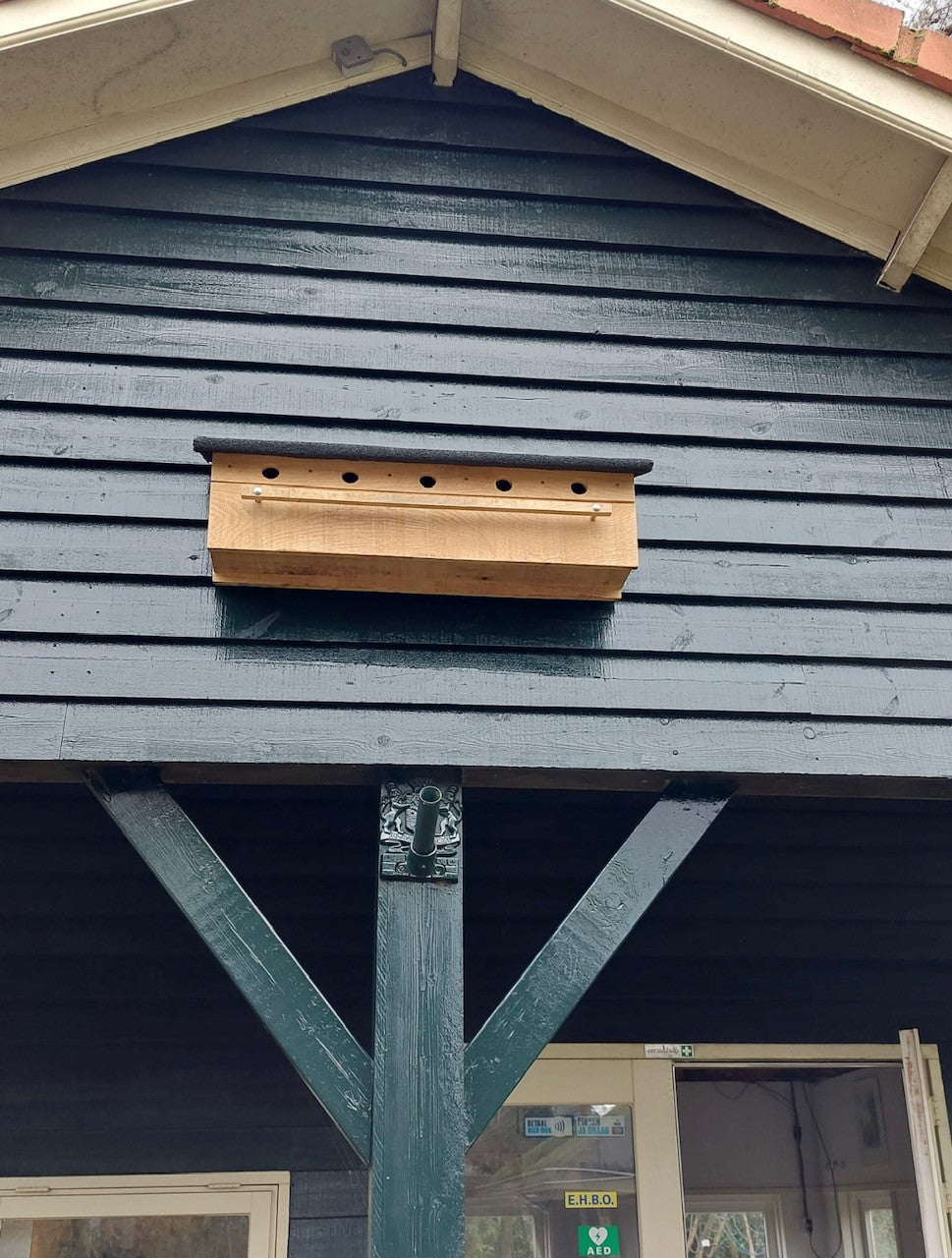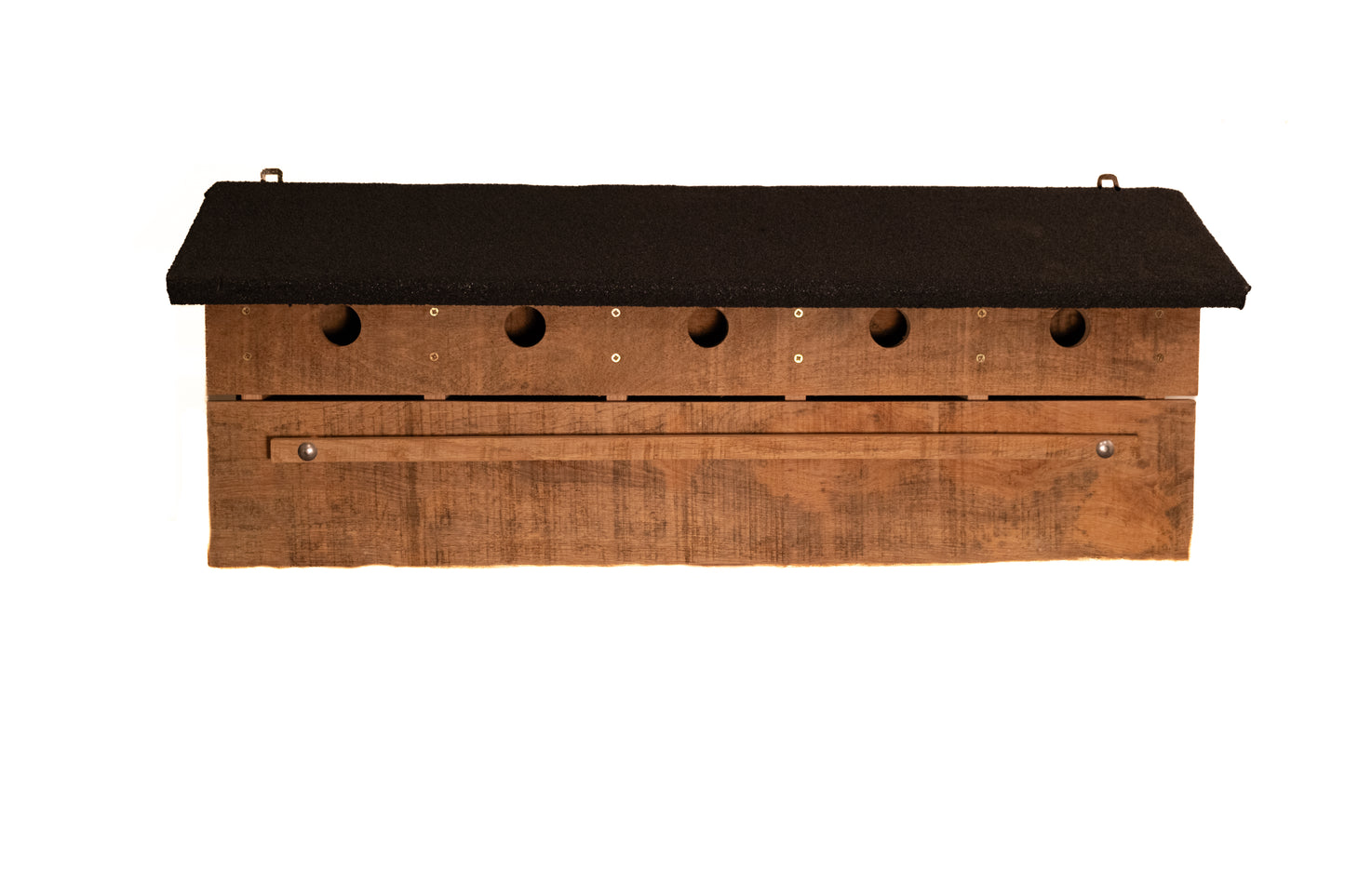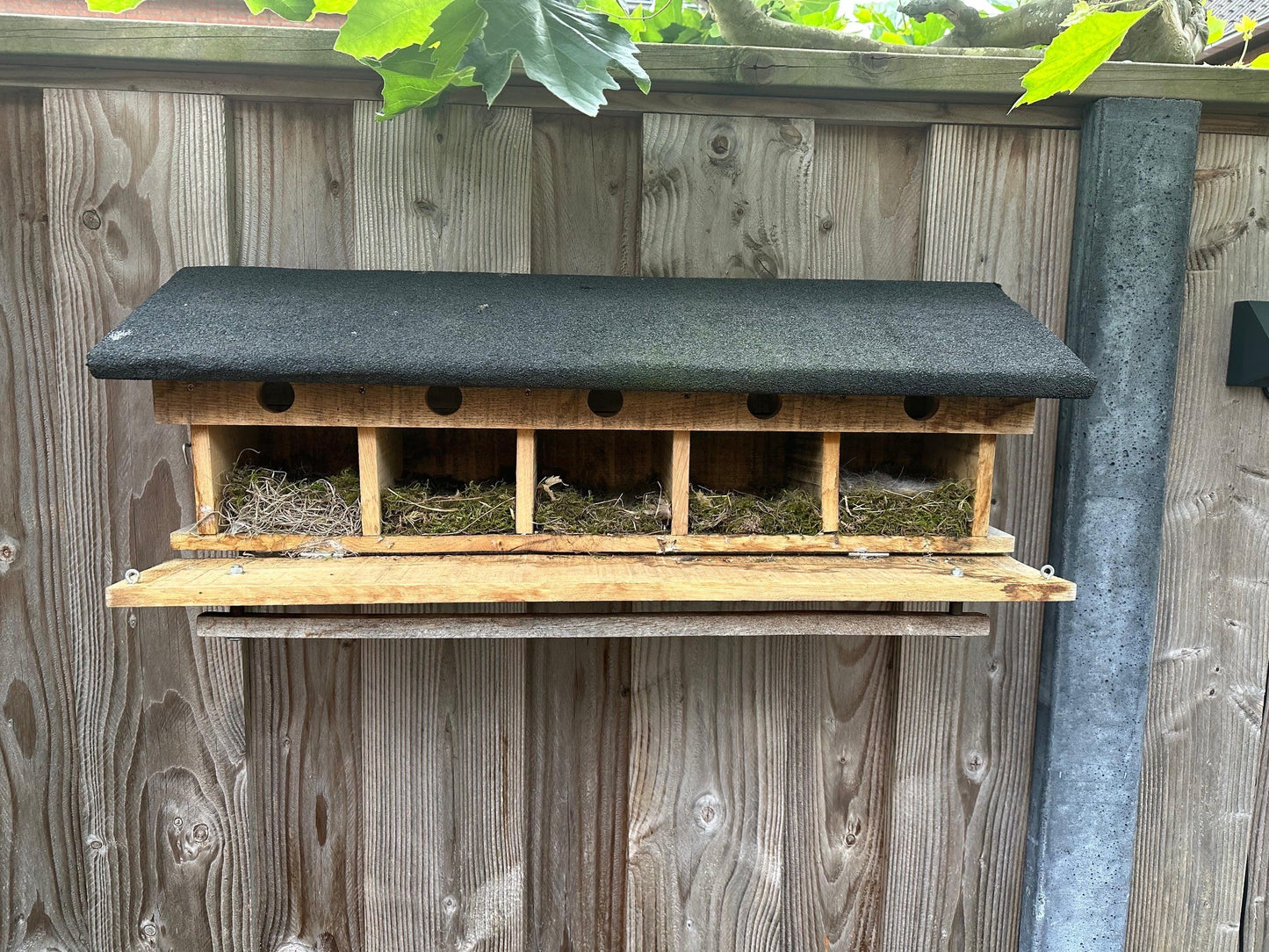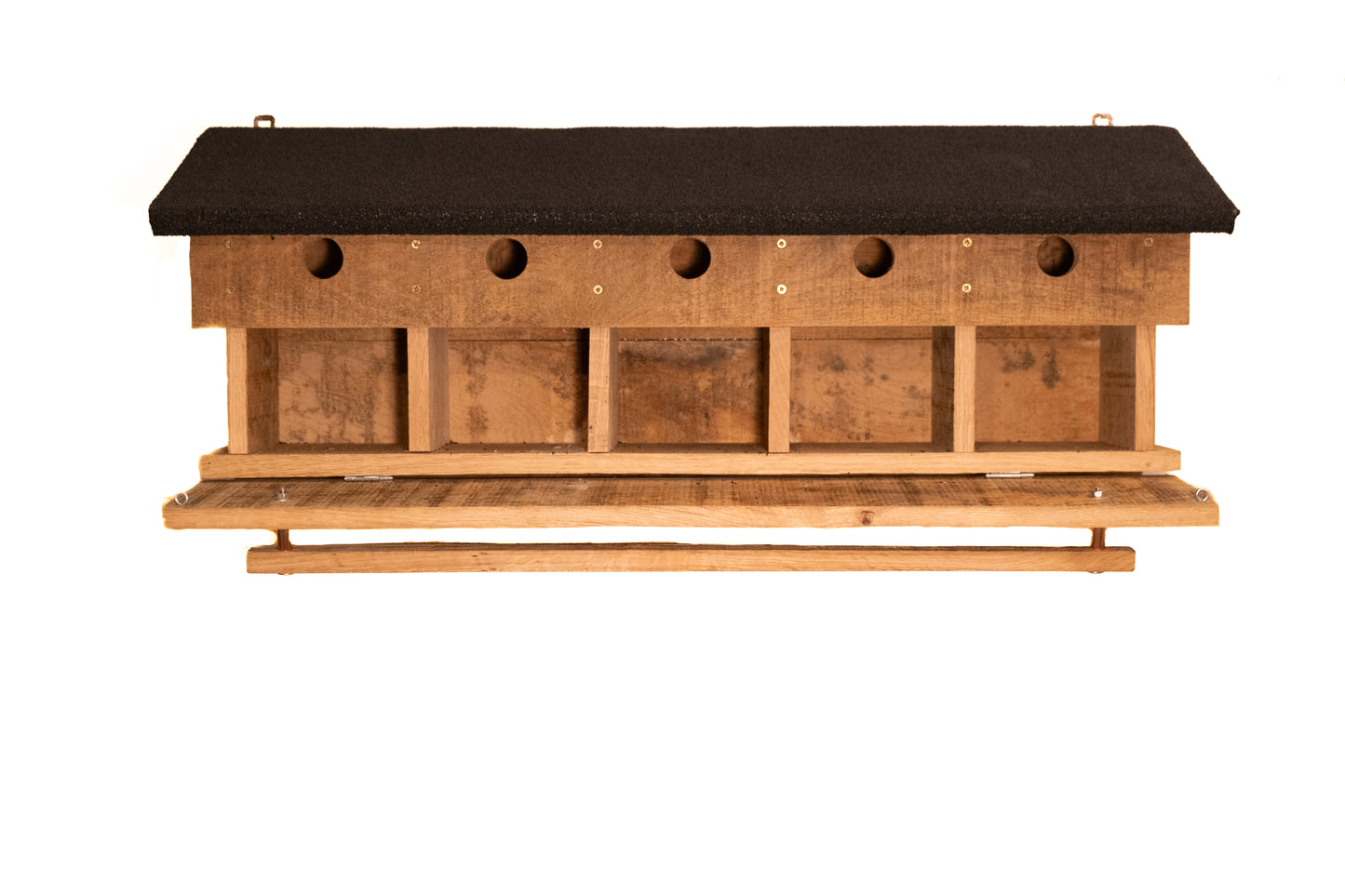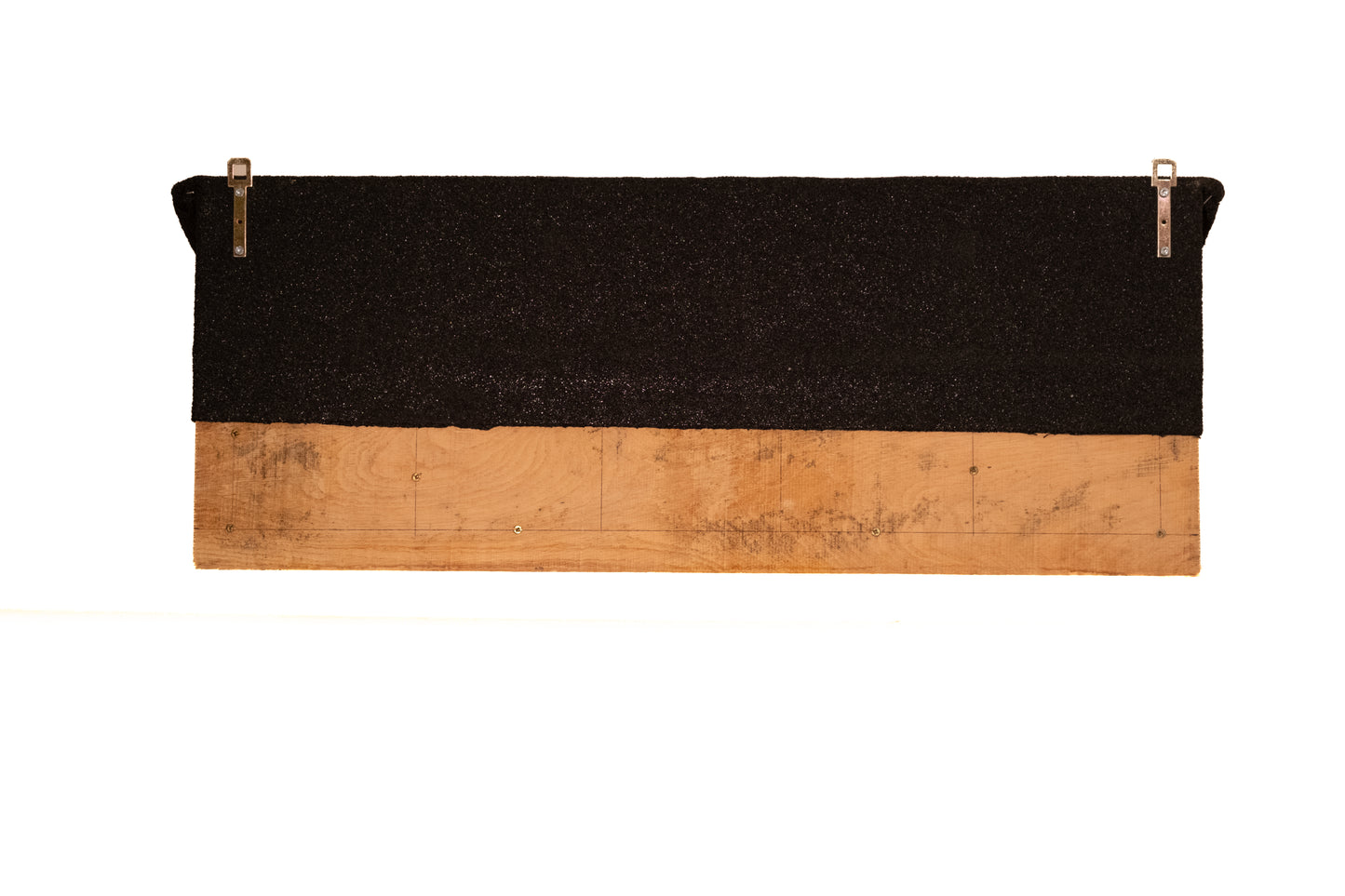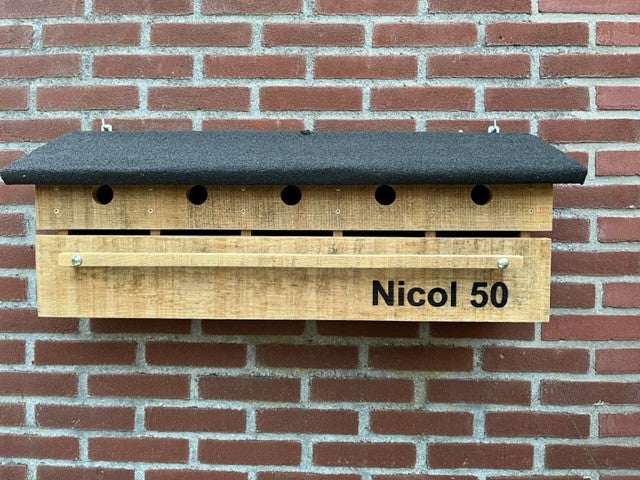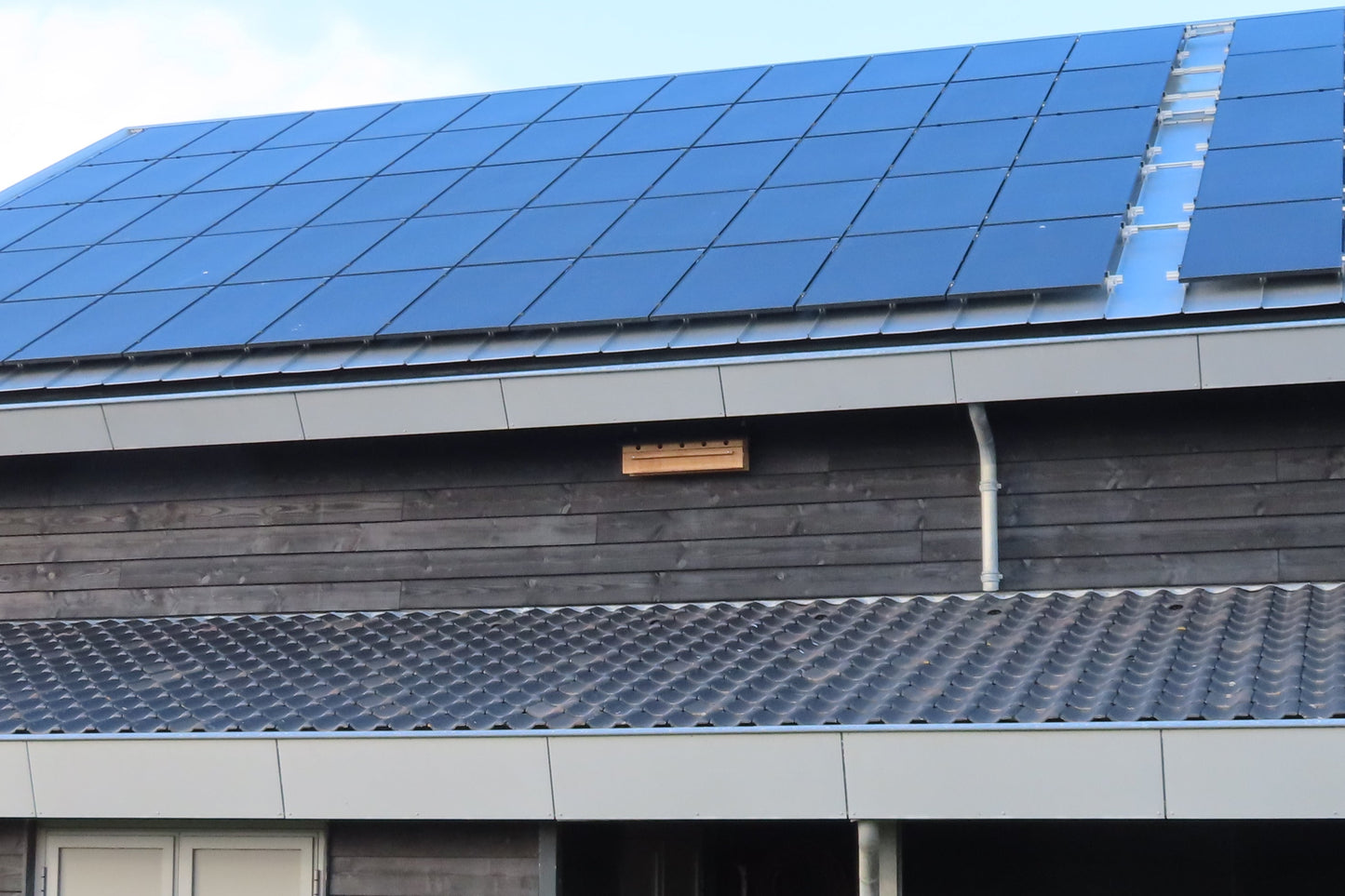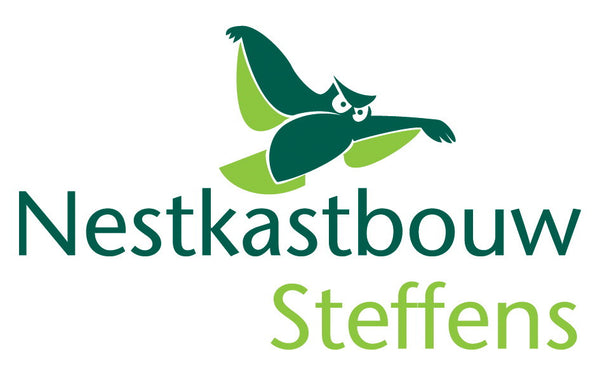Sparrow flat
Sparrow flat
The sparrow is having an increasingly difficult time, so it is not surprising that 2024 has also been declared the 'Year of the sparrow'. The reason for this can be given as the disappearance of nesting opportunities due to the insulation of roofs and buildings and the disappearance of old barns and stables. The disappearance of greenery, especially hedges and shrubs, is also one of the reasons why the numbers are declining rapidly.
Our nesting box offers a solution to preserve this species. We have chosen an oak box with 5 separate breeding spaces. This is because the sparrow mainly breeds in colonies.
The entire front can be opened by a hinged flap, so that the contents can be checked well and also makes cleaning very easy. The roof is finished with roofing felt. The cabinet is also equipped with 2 sturdy suspension brackets, making mounting easy.
About the sparrow
About the sparrow
The house sparrow (Passer domesticus) can grow to 14 to 16 centimetres and is the
year round in our country. The population is estimated between 2 and 3 million. This
seems like a lot, but in recent years the population has declined rapidly. Sparrows chirp and are very social birds, so they usually live in
groups. The sparrow has a small habitat, usually no larger than a few hundred meters around their nest, so they rarely leave their birthplace. Sparrows are often found in gardens and parks, where they look for food and shelter in bushes and hedges. House sparrows usually make their nests in and around
buildings. They look for places under roof tiles, in cracks in walls, or in ivy that grows along facades. These nests are not only used to hatch eggs, but also as a sleeping place outside the breeding season. During spring and summer, house sparrows can raise young several times, sometimes three to four times a year. For this bird too, the natural nesting possibilities are becoming increasingly less due to the modernization and sustainability of houses. As a result, they are increasingly dependent on nest boxes hung by humans.
Material and maintenance
Material and maintenance
Wood type: solid oak (16mm).
Lifespan: approx. 15 years
Weight: approx. 15 kg.
Dimensions: length 90 cm, height 35 cm, width 20 cm.
Roof: finished with high-quality bitumen roofing felt, which guarantees a longer lifespan.
Maintenance: in principle the cabinet does not need any maintenance and therefore does not need to be painted or stained. In fact, the cabinet only becomes more beautiful over time because the wood turns grey and blends in with nature.
Check; sparrows breed from the end of April. From mid-May the box can be checked for broods by carefully opening the front flap. If there is still brooding, it is advisable to check again after 2 weeks to see if there are young. Annual inspection (in September) is necessary, the nesting material must then be removed.
To hang
To hang
Hanging: usually quite simple to achieve because the cabinet is equipped with 2 hanging brackets. In addition, 2 sturdy hooks are supplied that can be drilled into the wood or into the stone/joint.
Nesting material: do not put nesting material in the box, the sparrows do this themselves. The nest consists mainly of straw, grass and feathers.
Hanging location: it is advisable to hang the cabinet high (higher than 2.5 meters) when hanging it on the house. Preferably under the eaves or roof overhang. If it is a quiet place, it can also be lower at approx. 2.5 meters.
Other residents: tits (especially great tits and blue tits), pied flycatchers and even nuthatches make grateful use of this box.
Contact voor advies en prijs
Contact voor advies en prijs
It is advisable to contact us so that we can guide you to the right box and the right hanging location. We can look with you and give sound advice using Google maps. We also have the necessary map material of owls in your area.
De nestkast wordt verzonden inclusief bevestigingsmateriaal, zodat u hem eenvoudig zelf kunt ophangen.
Share
